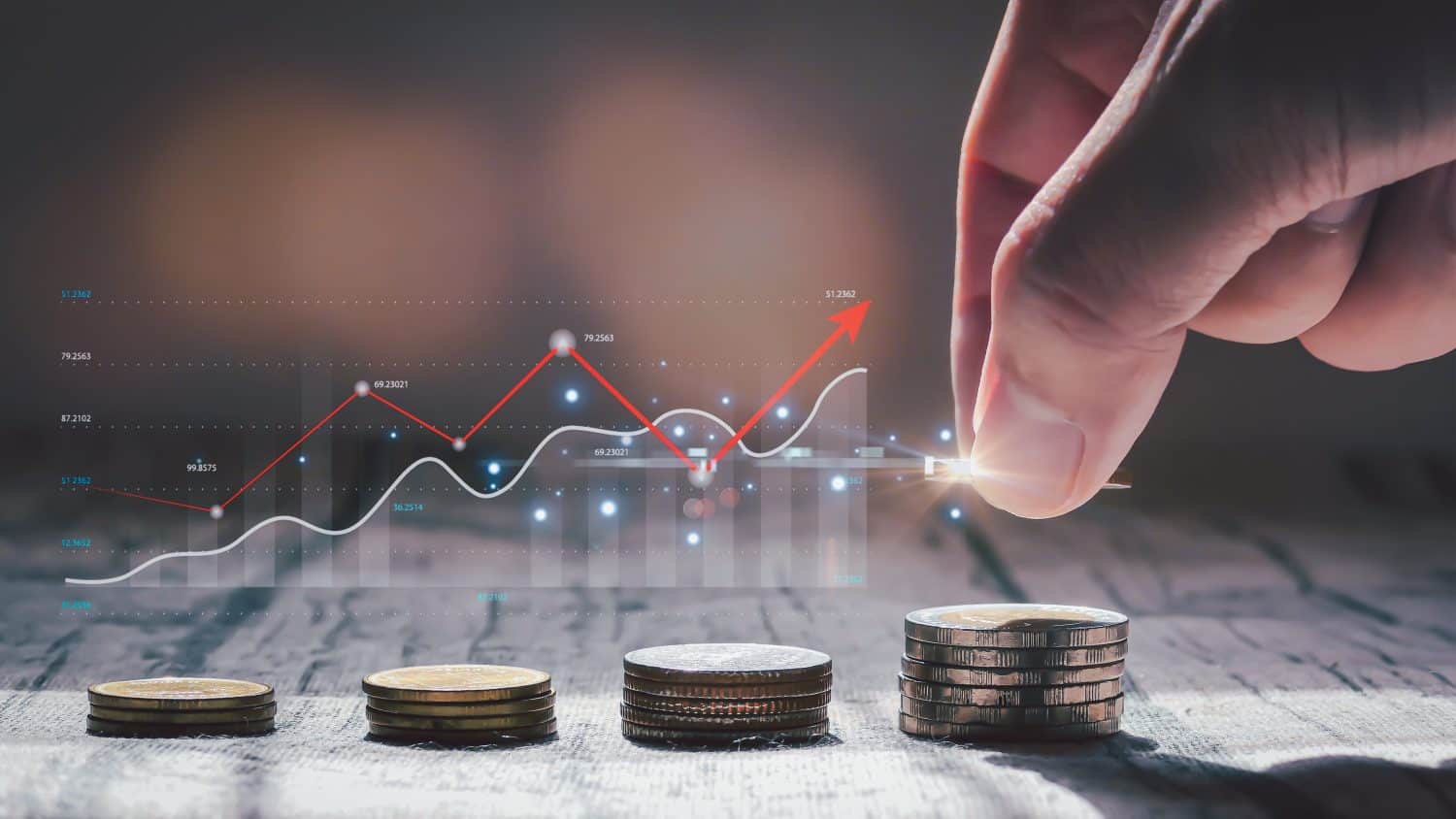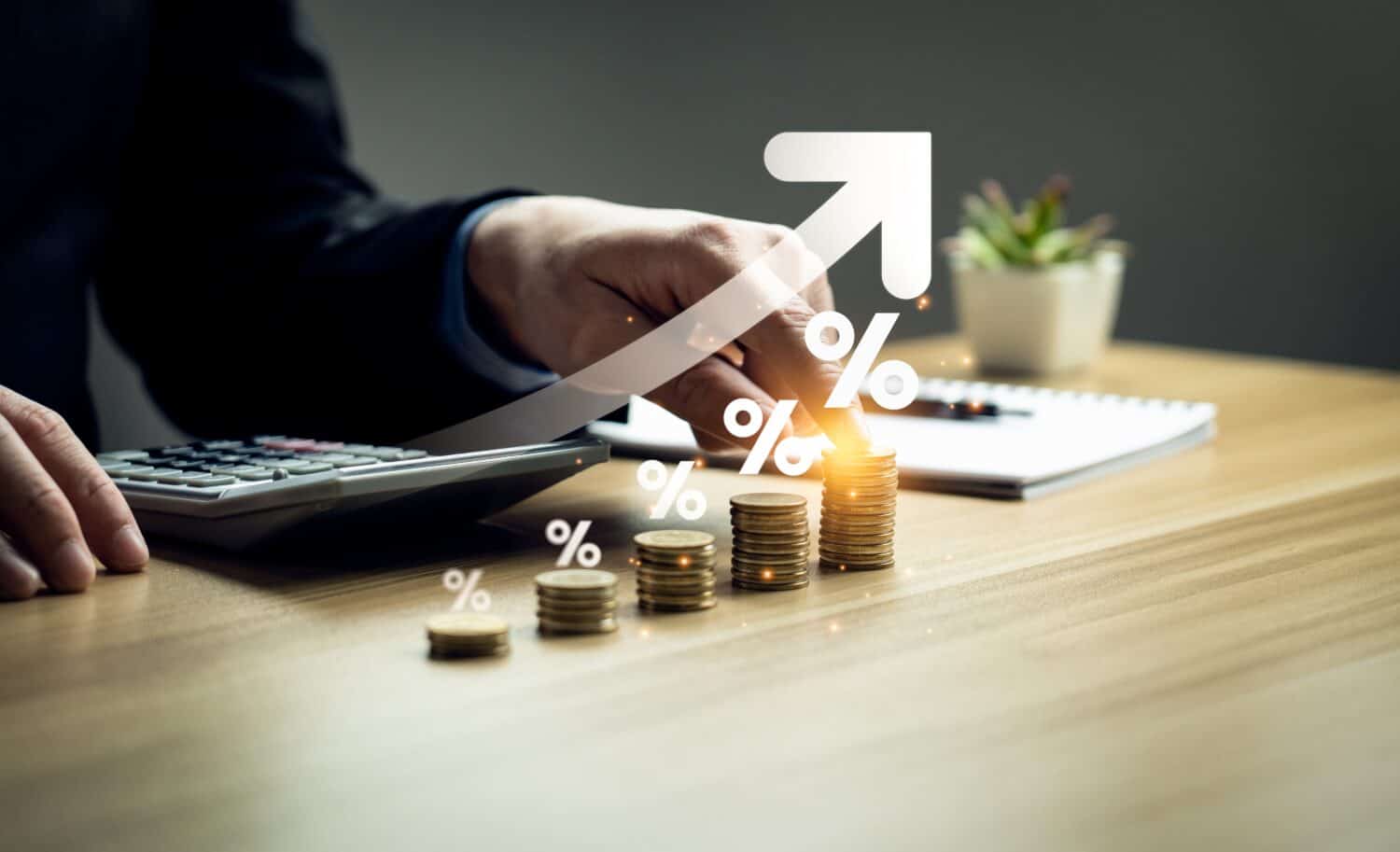
If you’re looking for healthy dividends to increase your cash flow and diversify your investments, look into dividend-paying exchange-traded funds (ETFs).
Look at the JPMorgan Nasdaq Equity Premium Equity Income ETF (NASDAQ:JEPQ), for example.
With a yield of 9.26%, the upward-trending ETF generates income by selling options and by investing in U.S. large-cap growth stocks. All of which allows it to deliver a monthly income stream through options premiums and stock dividends. Even better, investors have also benefited from the ETF’s appreciation. In fact, since bottoming out at around $41 a share in November, the ETF rallied to a recent high of $55.27.
Still a solid investment with a solid dividend, it’s well worth the investment.
However, it’s not the only strong dividend-paying ETF worth buying. Here are five more.
Key Points About This Article:
- Protect your portfolio from market volatility with strong ETF dividend stocks.
- With a strong history of dividend growth, these top funds will pay you every month.
- Keep your portfolio well-protected with reliably safe stocks with yield. You may also want to grab your free copy of “2 Legendary High-Yield Dividend Stocks“ now.
Invesco KBW Premium Yield Equity REIT ETF (KBWY)

With a yield of 7.41%, the Invesco KBW Premium Yield Equity REIT ETF (NASDAQ:KBWY) invests at least 90% of its total assets in the securities of small and mid-cap equity REITs that trade in the U.S. and carry respectable yields. Some of its top holdings include Global Net Lease (NYSE:GNL), Service Properties Trust (NASDAQ:SVC), Global Medical REIT (NYSE:GMRE), Gladstone Commercial (NASDAQ:GOOD), EPR Properties (NYSE:EPR) and Omega Healthcare (NYSE:OHI) to name a few.
Technically, after a brief pullback to $20.51, the ETF is just starting to pivot higher again. Last trading at $21.02, we’d like to see it retest $22.50 initially.
JPMorgan Equity Premium Income Fund (JEPI)

With a yield of 8.18%, the JPMorgan Equity Premium Income Fund (NYSE:JEPI) generates income through stock dividends and options premium. Some of its top holdings include Trane Technologies (NYSE:TT), Meta Platforms (NASDAQ:META), Southern Co. (NYSE:SO), AbbVie (NYSE:ABBV), Mastercard (NYSE:MA), Amazon.com (NASDAQ:AMZN), Microsoft (NASDAQ:MSFT) and ServiceNow (NYSE:NOW) to name just a few of the top holdings.
Technically, since bottoming out at $48 in November, the ETF rallied to a recent high of $59.90. From here, we’d like to see the JEPI ETF rally to $65, allowing investors to profit from price appreciation and its current yield.
Global X Super Dividend U.S. ETF (DIV)

With a yield of 5.5%, the Global X Super Dividend U.S. ETF (NYSE:DIV) invests in some of the highest dividend-yielding stocks in the U.S. Some of those top holdings include Spire (NYSE:SR), Kinder Morgan (NYSE:KMI), Omega Healthcare (NYSE:OHI), Philip Morris (NYSE:PM), Duke Energy (NYSE:DUK), AT&T (NYSE:T) and Dominion Energy (NYSE:D) to name just a few.
Technically, the ETF has been in a strong uptrend since bottoming out in November at around $14.50. Now up to $18.73, we’d like to see the DIV ETF rally to $25 initially.
Invesco S&P Small Cap High Dividend Low Volatility ETF (XSHD)

With a yield of 7.67%, the Invesco S&P Small Cap High Dividend Low Volatility ETF (BATS:XSHD) invests 90% of its total assets in the S&P Small Cap 600 Low Volatility High Dividend Index. Some of its top holdings include ARMOUR Residential (NYSE:ARR), Two Harbors Investment (NYSE:TWO), Ellington Financial (NYSE:EFC), Innovative Industrial Properties (NYSE:IIPR), Ready Capital (NYSE:RC) and Cal-Maine Foods (NASDAQ:CALM).
SPDR Blackstone High Income ETF (HYBL)

With a yield of 8.22%, the SPDR Blackstone High Income ETF (BATS:HYBL) invests in high-yield corporate bonds, senior loans, and debt tranches of US collateralized loan obligations, as noted by SSGA.com. It also uses an actively managed strategy that seeks to provide risk-adjusted total return and high current income, with less volatility than the general bond and loan segments over full market cycles.
Technically, the HYBL has been a strong performer. Since bottoming out at around $23 in late 2022, it’s now up to $28.59. From here, with patience, we’d like to see it closer to $35.
Invesco Senior Loan ETF (BKLN)

We can also look at the Invesco Senior Loan ETF (NYSE:BKLN).
With a yield of 9.65%, the BKLN ETF invests 80% of its total assets in securities that comprise the Morningstar LSTA US Leveraged Loan 100 Index. That index, according to Invesco.com, “is designed to track the market-weighted performance of the largest institutional leveraged loans based on market weightings, spreads, and interest payments.”
Technically, the BKLN ETF has been in a strong uptrend since bottoming out at around $19.20 in November. Now up to $21.16, we’d like to see it rally to $25 initially. With this one, not only can we collect its high yield, but we can also profit from further price appreciation.
The Average American Has No Idea How Much Money You Can Make Today (Sponsor)
The last few years made people forget how much banks and CD’s can pay. Meanwhile, interest rates have spiked and many can afford to pay you much more, but most are keeping yields low and hoping you won’t notice.
But there is good news. To win qualified customers, some accounts are paying almost 10x the national average! That’s an incredible way to keep your money safe and earn more at the same time. Our top pick for high yield savings accounts includes other benefits as well. You can earn up to 3.80% with a Checking & Savings Account today Sign up and get up to $300 with direct deposit. No account fees. FDIC Insured.
Click here to see how much more you could be earning on your savings today. It takes just a few minutes to open an account to make your money work for you.
Our top pick for high yield savings accounts includes other benefits as well. You can earn up to 4.00% with a Checking & Savings Account from Sofi. Sign up and get up to $300 with direct deposit. No account fees. FDIC Insured.
Thank you for reading! Have some feedback for us?
Contact the 24/7 Wall St. editorial team.





